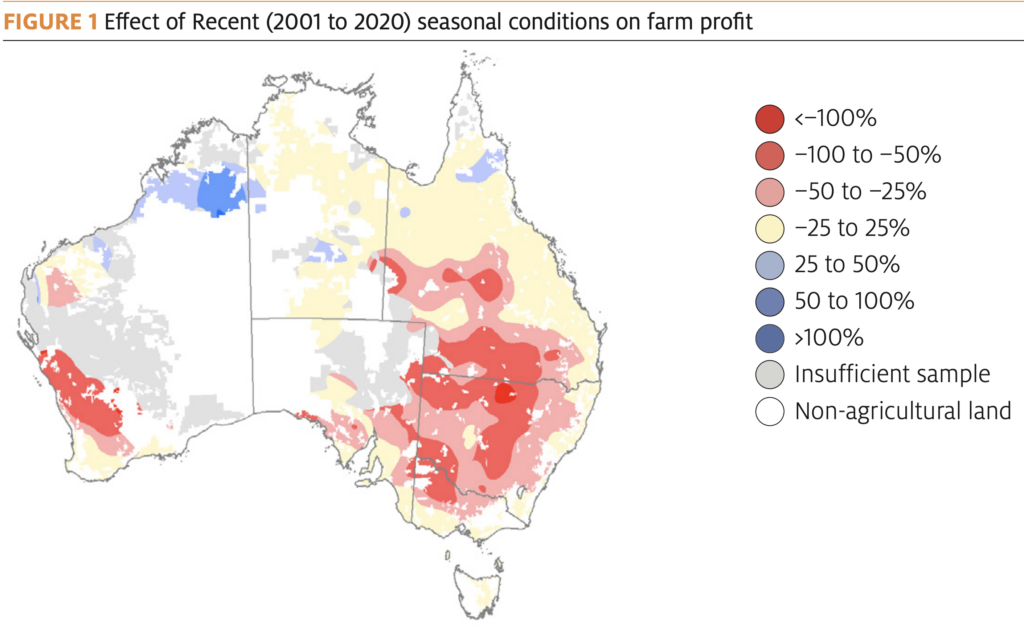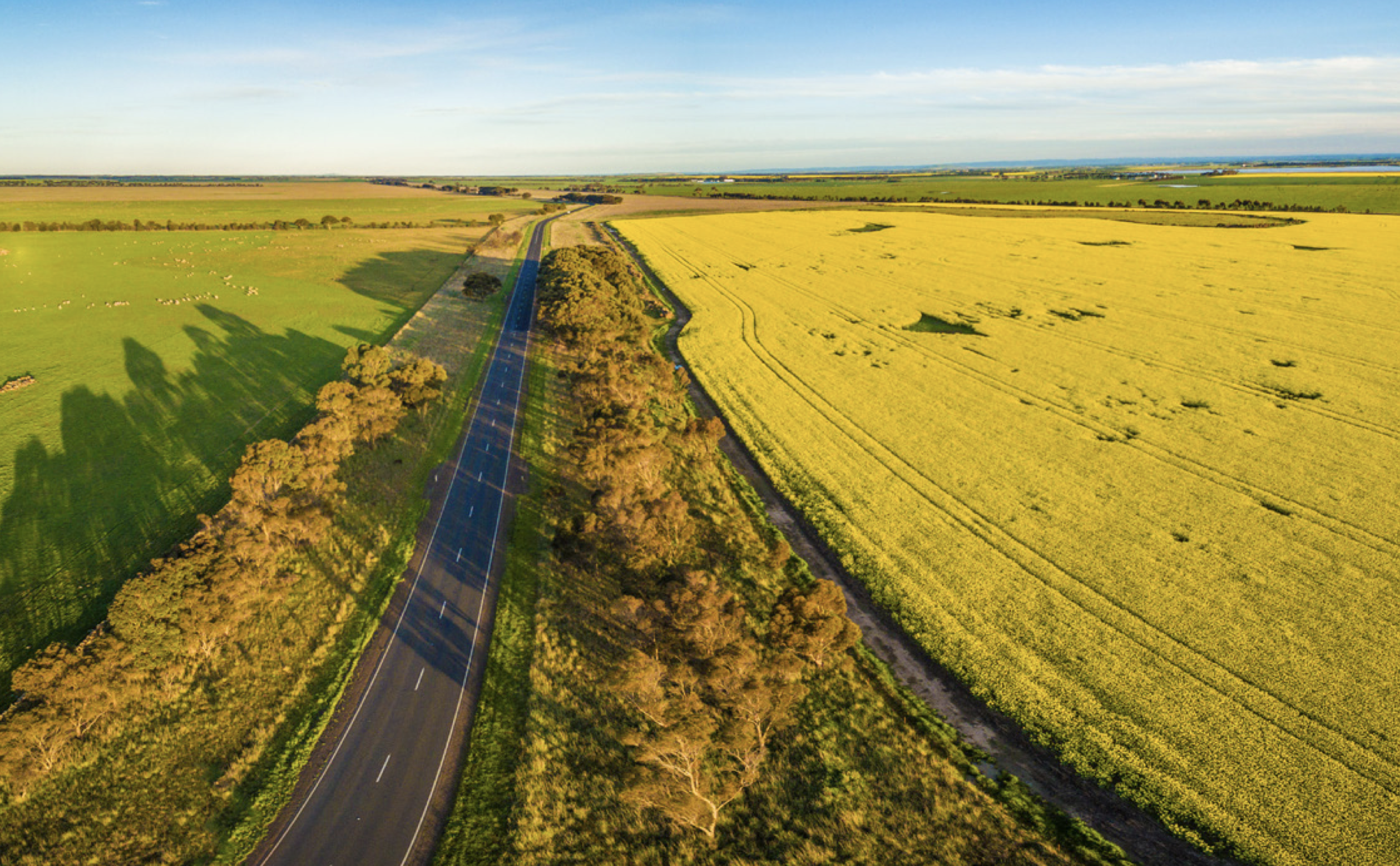Australia’s Government has just published a report that presents devastating reality to that country’s farmers.
The report is titled Climate change impacts and adaption on Australian farms, and was prepared by the Department of Agriculture, Water and the Environment (ABARES). It’s hard to imagine this is a bunch of wild-eyed greenie zealots.
The report first notes the climate basics. Australia’s climate has warmed on average by 1.4°C since 1910, with most of this occurring since 1950. There has also been a decline in winter season (April to October) rainfall in south-western Australia (20% since 1970) and south-eastern Australia (12% since 2000).
The report’s main focus is on the economic consequences of these climate changes. ABARES modelling indicates estimates that changes in seasonal conditions over the period 2001 to 2020 (relative to 1950 to 2000) have reduced annual average farm profits by 23%, or around $29,200 per farm. In the 20 years since 2000, the risk of very low farm returns (due to climate variability) essentially doubled (relative to the period 1950 to 2000), increasing from a 1 in 10 frequency to more than 1 in 5.

The study then looks forward, using various standard emissions scenarios to gauge future impacts on farmers, concluding: “While much uncertainty remains, the results suggest that climate change could make conditions tougher for Australian farmers and will require significant adaptation responses.”
The authors stress that their report is not a prediction of outcomes, but rather a warning of what might occur if adaptive measures are not taken.
They observe: “There is already evidence of strong farm adaptation responses to the recent climate shifts with improvements in technology and management practices helping to increase farm productivity.”
And note in particular: “Much of the adaptation effort on farms has been directed towards improving performance under dry conditions. Within the cropping sector for example there have been a variety of management practice changes implemented in recent decades (including conservation tillage and soil amelioration) focused on preserving soil moisture as an adaptation to reduced growing season rainfall.”
Here in NZ, we’re seeing an awakening of interest in ‘regenerative farming’ as a response to water deficits (among other benefits).
The authors concede that technology might improve farm productivity and hence help sustain profitability, but add: “it remains hard to predict future productivity growth, particularly the extent to which new technologies can improve the water use efficiency of crop and pasture systems beyond current levels.”
But they cannot blur the bad news: “Despite these improvements Australian farm profits have become more sensitive to drought impacts over time. That is, while average farm productivity and profits have increased, the difference between profits in normal and drought years has widened.”
Where to? “In the long-term, there may be pressure for more transformative change, at least where productivity growth is insufficient to offset the effects of climate change. This could include the emergence of new land use activities such as carbon abatement, biodiversity conservation, or renewable energy generation as complements to traditional farming.”
I haven’t seen anything this dire written about the effects of climate change on NZ farming. But the laws of physics, biology and chemistry are universal. So hopefully our CRIs, farm sector groups, and leading edge farmers have their eyes wide open and are paying attention to our neighbours across the Tasman.

